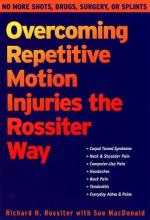|
This section contains 869 words (approx. 3 pages at 300 words per page) |

|
Repetitive motion injury (RMI), sometimes called repetitive strain injury, cumulative trauma disorder, or overuse syndrome, is an umbrella term used to describe a variety of diagnostic conditions characterized by pain and discomfort that develop gradually in such soft-tissue structures as tendons, tendon sheaths, nerves, muscles, or blood vessels. Repetitive motion injuries may become progressively worse over time without treatment and may result in a complete loss of function in the affected area. Usually RMIs are associated with occupational causes, although nonoccupational activities, such as sports, hobbies, or driving may also contribute to the problem.
While the term "repetitive motion injury" is relatively new, gaining popularity in the final decades of the twentieth century, the occurrence of RMIs in industry is not new. In 1717, Bernardino Ramazzini, the father of occupational medicine, first introduced physicians to the common musculoskeletal disorders that arose from eighteenth-century occupations. As...
|
This section contains 869 words (approx. 3 pages at 300 words per page) |

|


